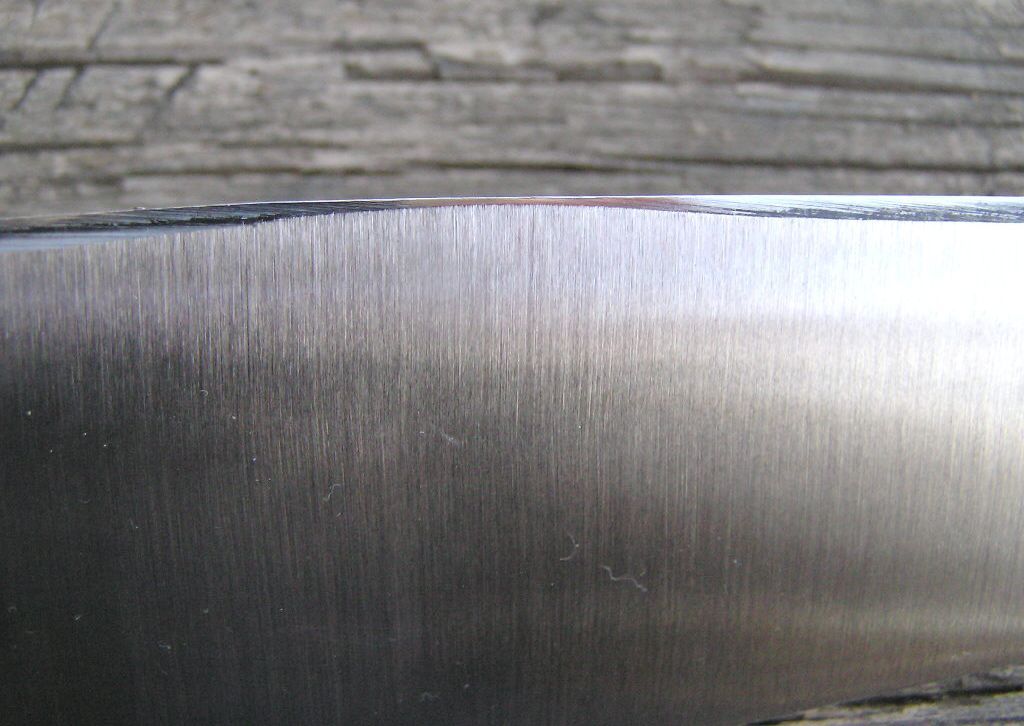I just stumbled upon an old picture that I shot of a brand new knife that came in for sharpening years ago. I began sharpening the knife but a problem quickly arose that got worse and worse. I think this image clearly shows the irreparable condition of a blade overgrind....












